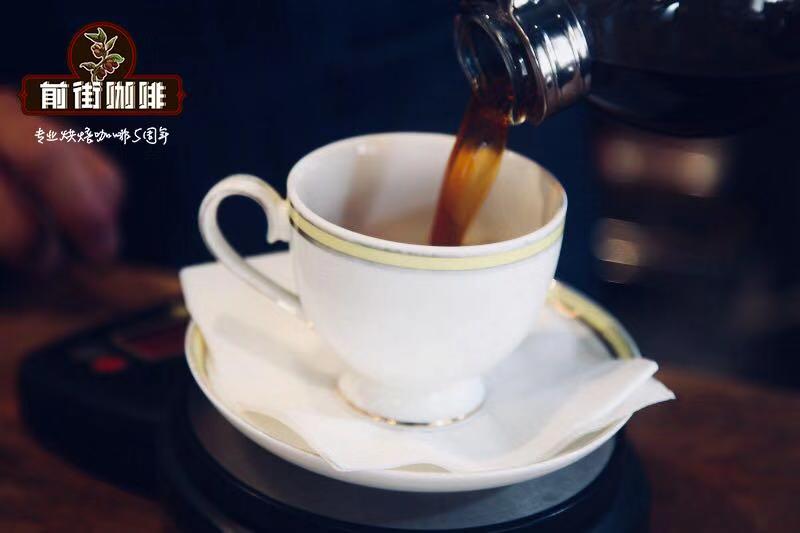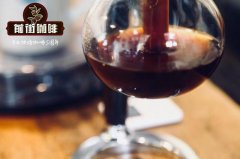Brief introduction of Guatemalan Coffee grades of Arabica varieties

Professional coffee knowledge exchange more coffee bean information please follow the coffee workshop (Wechat official account cafe_style)
Qianjie Coffee-introduction of grades and varieties of Guatemalan Coffee
Guatemala is a big coffee producer in Central America, ranking eighth in the world in terms of output. Guatemala, whose name comes from the Mayan language, means "country of the forest", thelandofmanytrees. Located in Central America, it is known as "the pearl in the crown of China and the United States". Although Guatemala has a limited land area, it has a rich and diverse climate. A country famous for its lakes and volcanoes, with volcanic soil, precipitation, temperature, humidity and altitude, Guatemala has a natural environment suitable for coffee growth.
It is a famous producer of high-quality Arabica coffee in Central America. Coffee from five volcanic and three non-volcanic producing areas is very unique and enjoys a high reputation in the international market.
Kaddura, a single gene variant of Bourbon bourbon, was found in Brazil in 1937. It has better production capacity and disease resistance than bourbon, and the tree is shorter and easy to harvest. Unfortunately, like bourbon, it has the periodic problem of production capacity fluctuation every two years. But its flavor is comparable to or slightly worse than bourbon beans, more importantly, super adaptability, no shade trees, direct exposure to the sun can also be full of vitality, commonly known as exposed coffee (Sun Coffee), can adapt to high-density planting, but must apply more fertilizer to increase costs, so the acceptance of coffee farmers is not high in the initial stage.
Kaddura is suitable for planting in the high altitude area from 700m to 1700 m, with strong adaptability to altitude, but the higher the altitude, the better the flavor, and the production capacity is relatively reduced, which is the fate of fine beans. In academic circles, some people call Kaddura the bourbon of dense and exposed version, which can be said to hit the nail on the head. There is also a variety of yellow Kaddura (Caturra Amarello) in Central and South America, but the wind rating is not as good as Huang bourbon.
Kaduai is an Arabica hybrid. It is a hybrid of Mundo Novo Mondonovo (New World) and Caturra Kaddura. It has a good ability to resist natural disasters, especially wind and rain. It inherits the advantages of Kaddura's low stature and changes Mondonwood's shortcomings. Another advantage is that the result is solid, and it is not easy to fall off when the strong wind blows, which makes up for the weakness of Arabica fruit, but the overall flavor is more monotonous than Kaddura, monotonous and less mellow, which is the greatest pity. In addition, the fruit growth and harvest life is only about ten years, and the short life span is also one of the weaknesses.
After its official release in the 1970s, it was extended to Central American countries, widely cultivated in Guatemala, Honduras, Panama, and Brazil of origin. Simply considering the flavor, under the appropriate local conditions and treatment, Kaduai can have a quite wonderful flavor.
Kaduai was introduced into Honduras in 1979 and officially launched in 1989. It is popular with farmers and accounts for more than half of all production in Honduras today. Because Kaduai's plants are short and can be planted densely, the flavor at an altitude of more than 1300 meters is also very good, the only disadvantage is that it is very vulnerable to diseases and insect pests. IHCAFE in Honduras is trying to develop a hybrid of Kaduai and Katim to improve disease resistance.
Bourbon is a variety of coffee trees, belonging to a branch of Arabica species. It is named according to the color of coffee fruit when it is ripe, such as red, yellow, orange, pink bourbon and so on. Among them, the output of orange bourbon is less, while that of pink bourbon is very little.
The name bourbon comes from the island of Reunion, and the French made three attempts to introduce coffee from Yemen to the island of Bourbon (now Reunion) in 1708, 1715 and 1718; but it was coffee that was transplanted for the second and third times.
In 1841, a French missionary established a church on the French island of Reunion. After leaving the island of Reunion, he set up new churches in several African countries, such as Zanzibar, Bagmoyo, St. Augustine, and Bra, and sowed coffee from the island of Reunion in each church. From then on, there was "bourbon coffee" on the African continent.
Guatemala Coffee Grade: the highest coffee is called SHB (short for Strictly HardBean) very hard beans, which is grown above 1350m above sea level, followed by HB (HardBean) hard beans, planted in 1200m--1400m, SH (Semi HardBean) slightly hard beans, EPW (Extra Prime Washed) extra quality water washed beans, PW (Prime Washed) quality water washed beans, EGW (Extra Good Washed) quality water washed beans, GW (Good Washed) good quality water washed beans. The planting elevations are about 1200m, 1000m, 800m, 600m, 800m and 600m, respectively.
END
Important Notice :
前街咖啡 FrontStreet Coffee has moved to new addredd:
FrontStreet Coffee Address: 315,Donghua East Road,GuangZhou
Tel:020 38364473
- Prev

How does Antigua coffee taste in Guatemala? Antigua Flower God Coffee describes the flavor
Professional coffee knowledge exchange more coffee bean information please follow the coffee workshop (Wechat official account cafe_style) Front Street Coffee-Guatemala Antigua Flower God Coffee is a brand bean of La minita, the producing area is located in Antigua, Guatemala, is surrounded by active volcanoes, 1850 meters above sea level, is the country's
- Next

Brief introduction of several Guatemalan Coffee producing areas
Professional coffee knowledge exchange more coffee bean information please follow the coffee workshop (Wechat official account cafe_style) Qianjie Coffee-Guatemala Coffee production area profile 1. AcatenangoValley: AcatenangoValley is 2000 m (6500 ft) above sea level, with dense shade and unique ecology, nearby Tierra del Fuego (Fu).
Related
- Beginners will see the "Coffee pull flower" guide!
- What is the difference between ice blog purified milk and ordinary milk coffee?
- Why is the Philippines the largest producer of crops in Liberia?
- For coffee extraction, should the fine powder be retained?
- How does extracted espresso fill pressed powder? How much strength does it take to press the powder?
- How to make jasmine cold extract coffee? Is the jasmine + latte good?
- Will this little toy really make the coffee taste better? How does Lily Drip affect coffee extraction?
- Will the action of slapping the filter cup also affect coffee extraction?
- What's the difference between powder-to-water ratio and powder-to-liquid ratio?
- What is the Ethiopian local species? What does it have to do with Heirloom native species?

